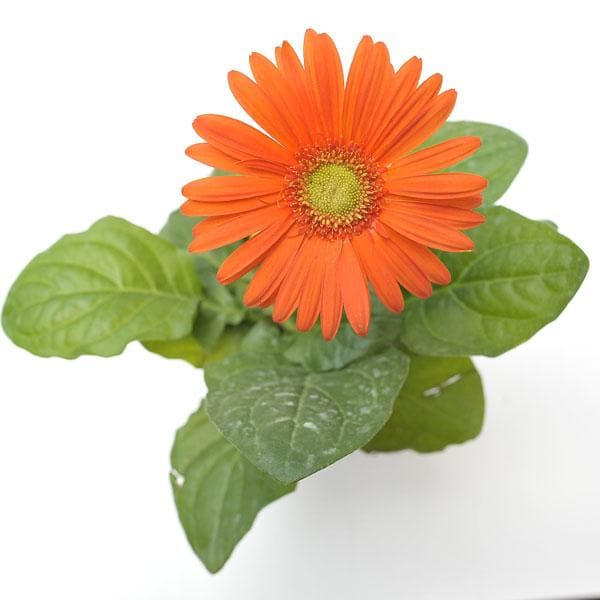
Gerbera (Orange) - Plant
(MRP Inclusive of all taxes)
- Shipping ₹79 for entire order
- Dispatch in 7 days
- Country of origin: India

(MRP Inclusive of all taxes)
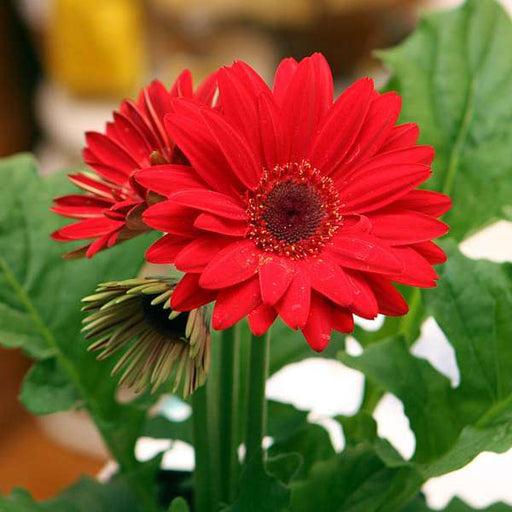 Save 25%
Save 25%
Gerbera (Red) - Plant The Gerbera (Red) plant, known for its vibrant and striking red blooms, is a popular choice for both indoor and outd...
View full details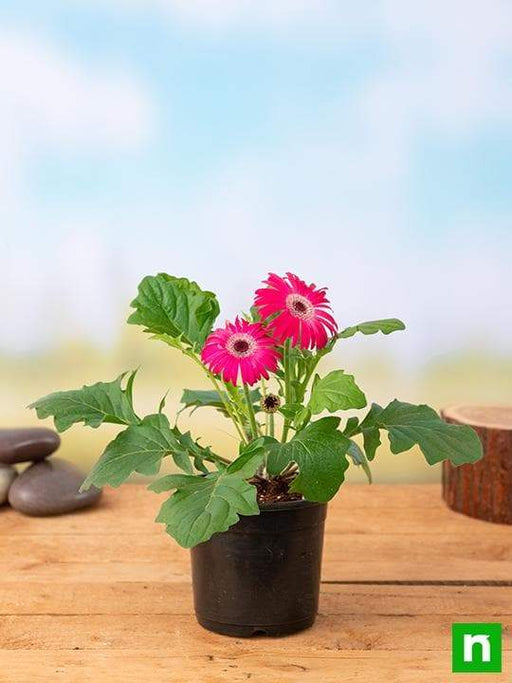
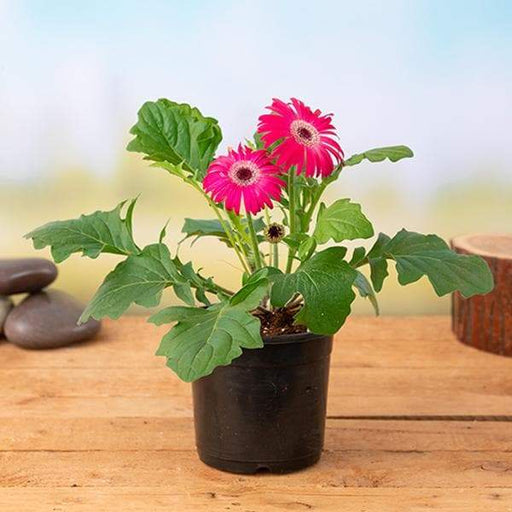 Save 25%
Save 25%
Gerbera (Any Color) - Plant The Gerbera plant, known for its vibrant blooms and diverse colors, is a stunning addition to any garden or in...
View full details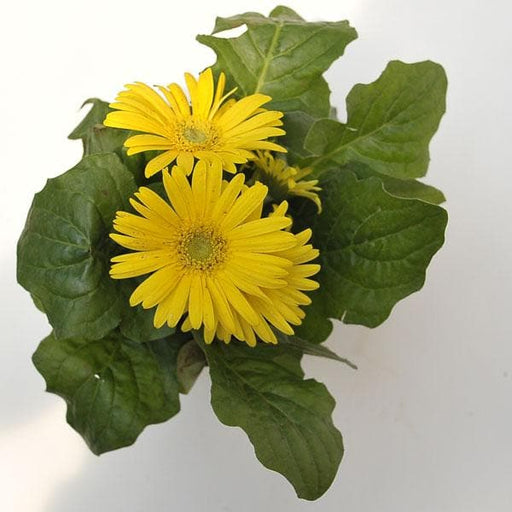 Save 25%
Save 25%
Gerbera (Yellow) - Plant The vibrant Gerbera (Yellow) plant, known for its stunning daisy-like flowers, is a favorite among gardeners and ...
View full details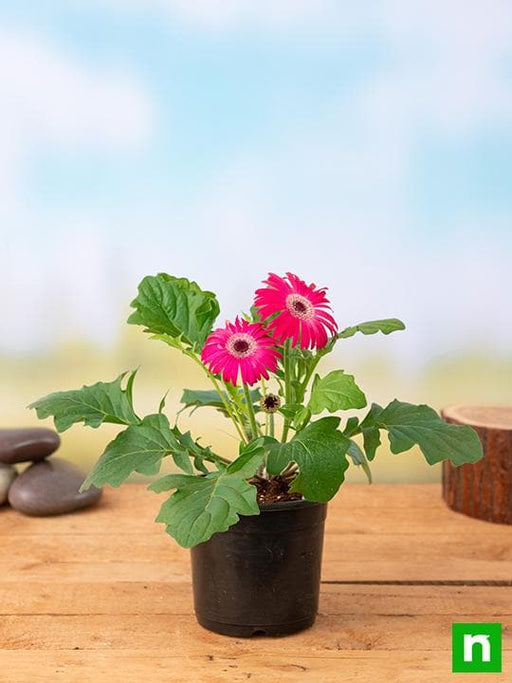
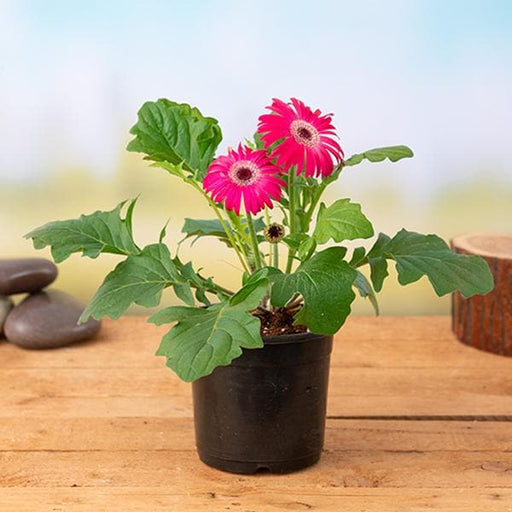 Save 25%
Save 25%
Gerbera (Dark Pink) - Plant The Gerbera (Gerbera jamesonii), known for its vibrant dark pink blooms, is a stunning addition to any garden ...
View full details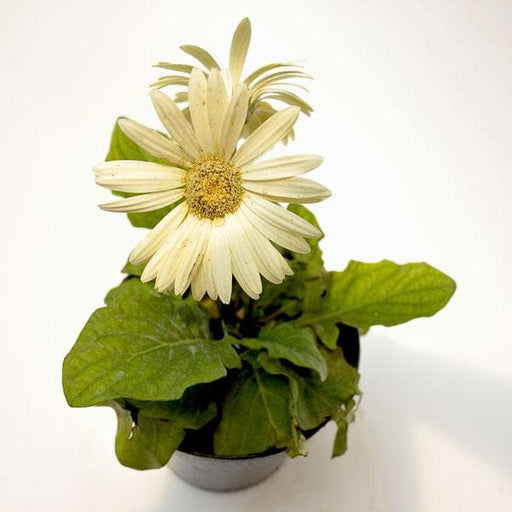 Save 25%
Save 25%
Gerbera (White) - Plant The Gerbera (White) is a stunning flowering plant known for its large, vibrant blooms and lush green foliage. Nati...
View full details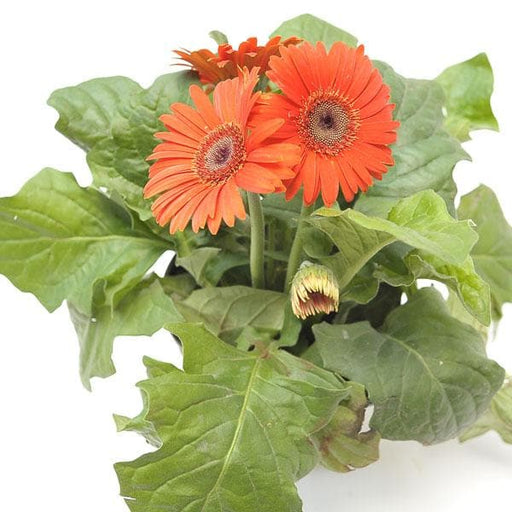
 Save 25%
Save 25%
Gerbera (Orange) - Plant The vibrant Gerbera (Orange) plant, known for its stunning daisy-like flowers, is a favorite among gardeners and ...
View full details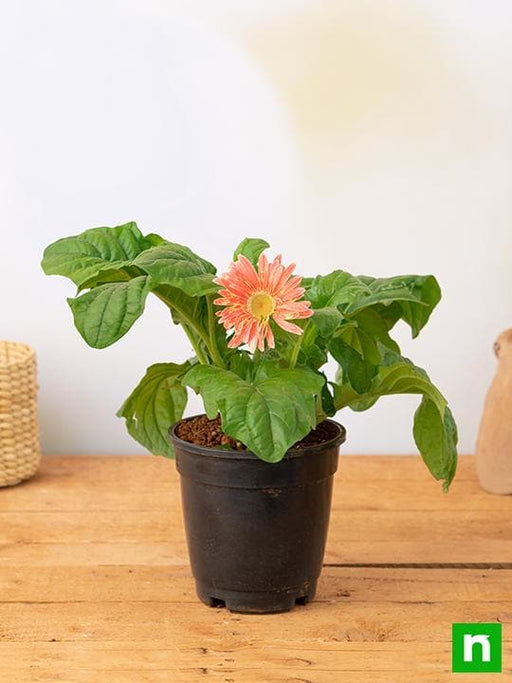
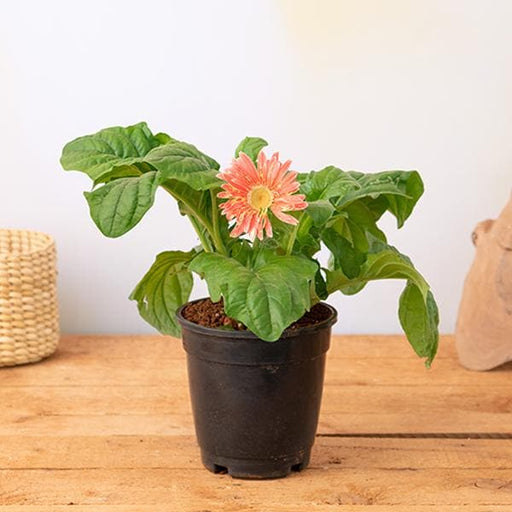 Sold out
Sold out
Gerbera (Pink) - Plant The Gerbera (Pink) is a stunning flowering plant known for its vibrant, cheerful blooms that can brighten any space...
View full details Save 15%
Save 15%
Pack of Vermicompost and Neem Cake for House Plants Transform your indoor garden with our premium Pack of Vermicompost and Neem Cake, spec...
View full details
Pack of Plant Growth and Flower Boosters Unlock the full potential of your garden with our Pack of Plant Growth and Flower Boosters! This ...
View full details Save 38%
Save 38%
Combo of Jeevamrut and Neem Raksha for Easy Growth and Protection of Houseplants Transform your indoor garden with our exclusive combo of ...
View full details Save 22%
Save 22%
Plant Nutrients Kit (Pack of 16) for a Healthy Garden Transform your garden into a lush paradise with our Plant Nutrients Kit, featuring 1...
View full details Save 16%
Save 16%
Combo of Top Plant Fertilizers Elevate your gardening game with our exclusive Combo of Top Plant Fertilizers, featuring two bags of premiu...
View full details Save 24%
Save 24%
Pack of 4 Additives to Make Soil Healthy and Nutrient Rich Transform your garden into a thriving ecosystem with our Pack of 4 Additives de...
View full details Save 30%
Save 30%
Transform your gardening experience with our premium Combo of Perlite and Vermiculite. This unique blend is designed to enhance soil aeration and ...
View full details Save 27%
Save 27%
Combo of 2 Vermicompost and Cocopeat - Enrich Your Soil Naturally! Transform your garden into a thriving ecosystem with our Combo of 2 Ver...
View full details
 Save 35%
Save 35%
Best 6 Plants for Perfect Indoor Garden Transform your living space into a lush oasis with our curated collection of the Best 6 Plants for a...
View full details
 Save up to 50%
Save up to 50%
Mini Succulent Garden Pack Transform your space with our Mini Succulent Garden Pack, featuring a delightful collection of 4 any variety beautiful s...
View full details
 Save 30%
Save 30%
5 Best Fragrant Plants Transform your garden or indoor space into a fragrant paradise with our curated selection of the 5 Best Fragrant Plants. Th...
View full details
 Save 24%
Save 24%
Set of 2 Bonsai Looking Grafted Adeniums Transform your indoor or outdoor space with our exquisite Set of 2 Bonsai Looking Grafted Adenium...
View full details Save 45%
Save 45%
Top 4 Die Hard Succulents Pack Transform your indoor or outdoor space with our Top 4 Die Hard Succulents Pack, featuring a curated selecti...
View full details
 Save 30%
Save 30%
5 Best Indoor Plants Pack Transform your living space into a lush oasis with our '5 Best Indoor Plants Pack.' This carefully curated collection fe...
View full details
 Save 25%
Save 25%
Set of 4 Evergreen Air Purifier Plant Pack Transform your indoor space into a lush, green oasis with our Set of 4 Evergreen Air Purifier Pla...
View full details| SrNo | Item Name | Qty |
|---|---|---|
| 1 | Gerbera (Orange) Plant in 6 inch (15 cm) Pot | 1 |
The vibrant Gerbera (Orange) plant, known for its stunning daisy-like flowers, is a favorite among gardeners and floral enthusiasts alike. With its bright orange petals, this perennial plant adds a splash of color to any garden or indoor space. Native to South Africa, Gerberas are not only visually appealing but also symbolize beauty and innocence, making them a perfect gift for loved ones.
What makes the Gerbera (Orange) special is its ability to bloom in various conditions, providing a long-lasting display of color. These flowers are also known for attracting pollinators, such as bees and butterflies, contributing positively to the ecosystem. With their cheerful appearance, Gerberas can uplift any environment, making them a popular choice for floral arrangements and decorations.
One of the standout features of the Gerbera (Orange) is its remarkable variety of colors and sizes, allowing for creative landscaping and design options. Additionally, they are known for their air-purifying qualities, helping to improve indoor air quality while adding aesthetic value.
Gerbera plants play a significant role in supporting local ecosystems by attracting beneficial insects. Their ability to purify the air makes them an excellent choice for indoor spaces, contributing to a healthier living environment. By choosing to grow Gerberas, you are not only enhancing your surroundings but also promoting biodiversity.
If you think caring for a Gerbera is like babysitting a cactus, think again! These vibrant beauties require a bit of TLC. They thrive in well-draining soil and love a sunny spot, but don’t let them roast like a marshmallow over a campfire. Water them just enough to keep their roots happy, but avoid drowning them like a bad swimmer. With the right balance, your orange Gerbera will bloom like it’s auditioning for a floral fashion show.
Who knew that a flower could be a multitasker? Gerbera daisies not only brighten up your space but also purify the air. They’re like the overachievers of the plant world, absorbing toxins while looking fabulous. Plus, their cheerful orange hue can boost your mood faster than a double shot of espresso. So, if you’re feeling down, just gaze at your Gerbera and let its vibrant energy lift you up!
Think of Gerberas as the fashionistas of the plant kingdom, strutting their stuff in a rainbow of colors. While we’re focusing on the fiery orange variety, there are countless others, from soft pastels to bold reds. Each variety has its own personality, making it easy to find one that matches your vibe. Whether you want a classic look or something more avant-garde, there’s a Gerbera out there just waiting to steal the spotlight.
Want to expand your Gerbera empire? Propagation is the name of the game! You can easily grow new plants from offsets or seeds, making it feel like you’re running your own botanical factory. Just remember, patience is key. It’s not a race; it’s more like a leisurely stroll through a garden. With a little love and care, you’ll soon have a whole army of orange Gerberas ready to take over your home.
Even the most glamorous plants can have their off days. Gerberas are prone to a few pesky diseases, like powdery mildew and root rot. But fear not! With a keen eye and a bit of preventive care, you can keep your Gerbera looking fabulous. Regularly check for signs of distress and treat any issues like a good friend would—swiftly and with a touch of humor. After all, a healthy plant is a happy plant!
Feeding your Gerbera is like treating it to a gourmet meal. A balanced fertilizer will keep it thriving and blooming like it’s on a perpetual vacation. Just remember, moderation is key—too much fertilizer can lead to a plant that’s more “overindulged” than “well-fed.” Aim for a feeding schedule that keeps your Gerbera satisfied without turning it into a diva demanding five-star treatment.
Sunlight is the secret sauce for a thriving Gerbera. These sun-loving plants bask in bright, indirect light like they’re on a tropical getaway. Too little sun, and they’ll sulk; too much, and they’ll fry. Finding that sweet spot is crucial. Think of it as the Goldilocks principle—just the right amount of sunshine will have your Gerbera blooming like it’s ready for a photoshoot.
Watering your Gerbera is an art form. Too little, and it’ll be thirstier than a marathon runner; too much, and it’ll feel like it’s swimming in a pool. The trick is to let the top inch of soil dry out before giving it a drink. It’s all about balance, like a tightrope walker on a sunny day. Master this skill, and your Gerbera will reward you with blooms that are the envy of the neighborhood.
Pests are the uninvited guests at the Gerbera party. Aphids and spider mites can crash the scene, but with a little vigilance, you can send them packing. Regularly inspect your plant and use insecticidal soap or neem oil to keep those pests at bay. Think of it as your Gerbera’s personal bodyguard, ensuring it stays fabulous and pest-free.
should your Gerbera live indoors or outdoors? Each option has its perks. Indoor Gerberas can brighten up your living space, while outdoor ones can bask in the sun and show off their colors to the world. Just remember, if you choose to take your Gerbera outside, it’s like sending it off to summer camp—make sure it’s ready for the adventure!
Just like you change your wardrobe with the seasons, your Gerbera needs a little seasonal TLC too. In the warmer months, it’s all about soaking up the sun and enjoying regular watering. As temperatures drop, you’ll want to scale back on watering and protect it from frost. Think of it as preparing your Gerbera for a cozy winter retreat, ensuring it’s ready to bloom again when spring rolls around.
The Gerbera (Orange) plant is a vibrant flowering perennial known for its stunning, daisy-like blooms. These cheerful flowers can brighten any garden or indoor space, making them the life of the party. With their bold orange hue, they’re like the sun’s little sibling, always ready to spread joy and warmth wherever they go.
Caring for your Gerbera (Orange) plant is a piece of cake! They love well-drained soil, bright light, and moderate watering. Just remember, they’re not fans of soggy feet, so let the soil dry out between waterings. Treat them right, and they’ll reward you with a dazzling display of orange blooms that’ll make your neighbors green with envy.
Absolutely! Gerbera (Orange) plants are like the social butterflies of the plant world; they thrive indoors as long as they get enough light. Place them near a sunny window, and they’ll be happy as clams. Just keep an eye on the humidity, and they’ll bloom like there’s no tomorrow, adding a splash of color to your home.
Gerbera (Orange) plants prefer a well-draining potting mix, ideally with a pH of 6.0 to 6.5. Think of it as their personal spa treatment—light, airy, and just the right amount of nutrients. A mix designed for African violets or a blend of peat, perlite, and compost will keep them thriving and blooming like the stars they are.
Water your Gerbera (Orange) plant when the top inch of soil feels dry. They like a good drink but despise being waterlogged. Think of it as a refreshing sip rather than a drowning session. Typically, once a week should do the trick, but always check first—no one likes a thirsty plant or a soggy root!
Yes, indeed! Gerbera (Orange) plants are like teenagers—they need a little extra nourishment to thrive. Use a balanced, water-soluble fertilizer every 4-6 weeks during the growing season. This will keep them happy and blooming like they just won the floral lottery. Just don’t overdo it; too much fertilizer can lead to a case of the “burns.”
You bet! Propagating Gerbera (Orange) plants is as easy as pie. You can do it through division or by taking cuttings. Just make sure each division has a healthy root system. Plant them in well-draining soil, give them some love, and soon you’ll have a mini Gerbera army ready to take over your garden!
Gerbera (Orange) plants can attract a few uninvited guests, like aphids, spider mites, and whiteflies. Keep an eye out for these little party crashers. If they show up, a gentle spray of insecticidal soap or neem oil will send them packing. Remember, a healthy plant is a happy plant, and nobody likes a pesty neighbor!
Gerbera (Orange) plants are the life of the party, blooming from spring to fall. With proper care, they can keep the show going for several months. Just think of them as the perennial performers of your garden, always ready to dazzle with their bright orange blooms. Keep them happy, and they’ll keep the good times rolling!
Good news for pet lovers! Gerbera (Orange) plants are non-toxic to cats and dogs. So, you can let your furry friends roam freely without worrying about them munching on your vibrant blooms. Just keep an eye on them; while the plants are safe, your pets might still prefer a good game of chase over floral feasting!
The best time to plant Gerbera (Orange) plants is in the spring after the last frost. They love warm weather and will thrive when the sun is shining. So, grab your gardening gloves and get ready to dig in! Plant them in a sunny spot, and watch as they burst into a riot of orange blooms all season long.